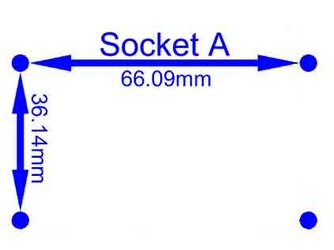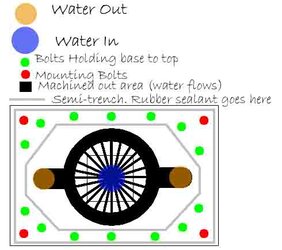- Joined
- Dec 16, 2001
- Location
- VIctoria, BC, Canada
Hi,
I have put my WC project on the backburner for a LONG time (1-2 years). I bought copper (I have 2 nice pieces) and have 3 nice heatercores to choose from. I know I want a T-line. I am holding off on buying a pump until I actually make the block to avoid putting more money into a project I don't know if I'll ever finish. Anyways, here's my question.
This is a picture I have found some time ago. I assume the numbers are correct, but is the measurement from the center of the holes or to the edge (the picture shows the arrows going to the edge)? Also, how big are the holes themselves. Is the core located directly in the center, so if I drew an X from hole to hole, the middle of the X would be the center of the core? To anyone who has made their own block, what is the best way to insure that the holes are lined up perfectly. I don't want to mess up my copper.
Thanks!
I have put my WC project on the backburner for a LONG time (1-2 years). I bought copper (I have 2 nice pieces) and have 3 nice heatercores to choose from. I know I want a T-line. I am holding off on buying a pump until I actually make the block to avoid putting more money into a project I don't know if I'll ever finish. Anyways, here's my question.
This is a picture I have found some time ago. I assume the numbers are correct, but is the measurement from the center of the holes or to the edge (the picture shows the arrows going to the edge)? Also, how big are the holes themselves. Is the core located directly in the center, so if I drew an X from hole to hole, the middle of the X would be the center of the core? To anyone who has made their own block, what is the best way to insure that the holes are lined up perfectly. I don't want to mess up my copper.
Thanks!

